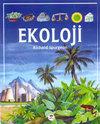与某些理化参数相关的中营养湖浮游植物的季节和空间分布
Q3 Environmental Science
引用次数: 8
摘要
2011年4月至2012年3月,对土耳其西北部中营养型湖泊Poyrazlar湖浮游植物的季节、空间分布及其与理化参数的关系进行了逐月研究。共鉴定出7个区系120个分类群。夏季以蓝藻为主,秋季以绿藻为主,冬季以硅藻和隐藻为主,春季以绿藻为主。采用典型对应分析(CCA)的统计方法,探讨了水温、pH、比电导、溶解氧、Secchi盘深度(透明度)、Chl-a、硝酸盐氮(NO3-N)、亚硝酸盐氮(NO2-N)、总磷(TP)、正磷酸盐(PO4-P)、二氧化硅(Si)、硫酸盐(SO4)浓度与优势种丰度的关系。CCA结果表明,影响浮游植物分布的最重要因素是主要营养物浓度、水温和水下光照。本文章由计算机程序翻译,如有差异,请以英文原文为准。
The Seasonal and Spatial Distribution of the Phytoplankton of a Mesotrophic Lake Related to Certain Physical and Chemical Parameters
The seasonal and spatial distribution of the phytoplankton and their relationship with physicochemical parameters of Lake Poyrazlar, a mesotrophic lake located in Northwest Turkey, was studied monthly between April 2011 and March 2012. A total of 120 taxa in 7 divisions were identified during the study. The planktonic algae of Lake Poyrazlar was dominated by Cyanobacteria in the summer, Charophyta in the fall, diatoms and Cryptophyta in the winter, and Chlorophyta in the spring. The relationships between water temperature, pH, specific conductance, dissolved oxygen, Secchi disk depth (transparency), Chl-a, nitrate-nitrogen (NO3-N), nitrite-nitrogen (NO2-N), total phosphorus (TP), orthophosphate (PO4-P), silica (Si), sulfate (SO4) concentrations, and the abundance of dominant species were explored using the statistical method of Canonical Correspondence Analysis (CCA). The CCA results showed that the most important factors affecting the distribution of phytoplankton were the concentrations of the main nutrients, water temperature, and underwater light.
求助全文
通过发布文献求助,成功后即可免费获取论文全文。
去求助
来源期刊

Ekoloji
环境科学-生态学
CiteScore
1.10
自引率
0.00%
发文量
0
审稿时长
>12 weeks
期刊介绍:
Cessation. Ekoloji is an international journal that focuses on papers that report results from original research on all disciplines engaged in the field of environmental research. We welcome articles that cover the entire spectrum of environmental problems and environmental pollutants, whether chemical, biological or physical. Its coverage extends to all environmentally related issues: air and water pollution, solid waste, noise, recycling, natural resources, ecology and environmental protection. It includes articles on basic and applied environmental pollution research, including environmental engineering and environmental health. All types of pollution are covered, including atmospheric pollutants, detergents, fertilizers, industrial effluents, metals, mining wastes, oil, pesticides, plastics, radioactive materials and sewage. It also includes research papers on ecological and environmental issues such as climate change, biodiversity. The primary criteria for publication are scientific quality and ecological/environmental significance.
The journal will be read and contributed to by biologists, applied ecologists, environmental scientists, natural resource specialists, environmental engineers, environmental health specialists, agro-ecologists, veterinaries, agricultural engineers, landscape planners and designers. The journal welcomes full "research papers" and short "research notes", only in the English language.
 求助内容:
求助内容: 应助结果提醒方式:
应助结果提醒方式:


